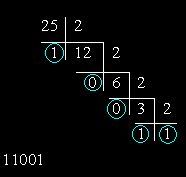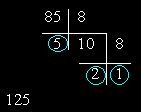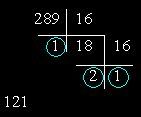Instruction
1
To convert a decimal number into binary number system, it is necessary to divide it by 2, recording the new result of dividing the integer and the remainder (0 or 1). The division must be carried out before until the quotient reaches 1. The binary number obtained by writing the last quotient and residue from previous points in reverse order. Example of the translation of decimal number 25 to binary number system see figure.

2
To convert a decimal number into octal notation, you must divide it into 8 recording the new result of the division in the form of a whole number and a remainder. The division must be carried out before until the result of the division is not equal to or less than 7. Octal number is obtained by writing the last quotient and residue from previous points in reverse order. Example of the translation of decimal 85 in octal number system is shown in figure.

3
To convert a decimal number in hexadecimal number system, it is necessary to divide it into 16 recording the new result of the division in the form of a whole number and a remainder. The division must be carried out before until the result of the division is not equal to or less than 15. A hexadecimal number is obtained by writing the last quotient and residue from previous points in reverse order. Example of the translation of the decimal number 289 in hexadecimal notation is shown in figure.

4
Translations of decimal to other system of notation made on a similar principle.
